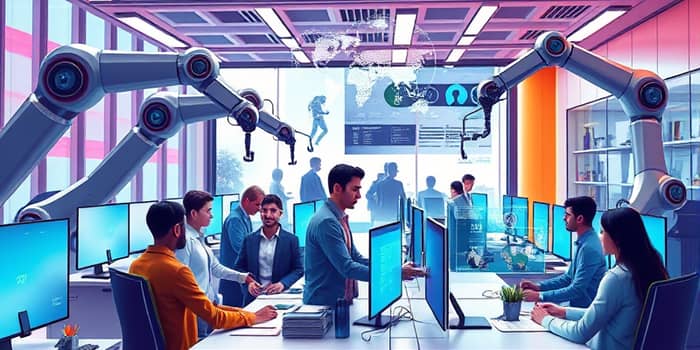
In an era of rapid digital transformation, professionals face growing demands to maintain high-quality output while balancing time and resources. Embracing automation can be the game-changer needed to sustain momentum and deliver lasting impact.
The global workflow automation market is projected to reach $80.9 billion by 2030, while the RPA sector alone grew to $22.79 billion in 2024. These statistics reveal a clear trend: organizations are investing heavily in systems that reduce manual effort, minimize errors, and accelerate decision-making. When routine tasks become automated, individuals can focus on creative, strategic projects that drive long-term growth.
Consider that over 90% of workers report automation increases their productivity, and companies see an average 22% reduction in operating costs after deployment. These figures highlight that automation is not a luxury but a necessity for professionals aiming to contribute consistently at a high level.
Organizations that leverage automation effectively report a 10–50% time savings on key processes, allowing employees to engage in higher-value activities. This shift not only boosts morale but also drives measurable improvements in customer satisfaction and project outcomes.
Across industries, automation technologies—ranging from RPA bots to AI-driven analytics—are reshaping how work gets done. By integrating these tools into familiar platforms, companies achieve faster adoption and a higher return on investment.
To harness the full power of automation, follow a structured roadmap:
By aligning your automation initiatives with organizational goals, you ensure that investments translate into consistent, meaningful contributions. Remember, successful deployment hinges on people as much as on technology.
Despite the clear benefits, 70% of automation projects fail to meet their objectives. This often stems from underestimating the importance of change management and workforce alignment. Without proper training and transparent communication, employees may resist new systems or revert to manual processes.
To mitigate these risks, adopt a phased approach: pilot automation in one department, gather feedback, and refine workflows before scaling across the organization. Emphasize the positive impact on daily routines—highlight how repetitive tasks will be handled by bots, allowing staff to engage in more meaningful and creative work.
These numbers illustrate the transformative potential of automation. In finance, RPA bots process invoices in minutes instead of hours. In marketing, AI tools personalize campaigns at scale. In IT, workflow automation reduces incident resolution times by up to 50%. Each success story reinforces the case for a deliberate, data-driven automation strategy.
As automation displaces certain roles, it simultaneously creates new opportunities. By 2030, estimates suggest a net gain of 78 million jobs, many in areas requiring advanced technical and creative skills. Staying relevant means continuously updating your skill set to work alongside intelligent systems.
Adopt a mindset of lifelong learning: explore AI augmentation tools like ChatGPT for content creation, master analytics platforms for data-driven decisions, and develop proficiency with RPA software. Such capabilities will allow you to maintain a steady stream of high-quality contributions, no matter how workflows evolve.
Embracing automation is more than a technological upgrade—it’s a strategic imperative for professionals committed to consistent, high-impact contributions. By understanding market trends, capitalizing on key benefits, and navigating implementation challenges, you can transform your daily work routine and propel your organization forward.
Remember, automation is not about replacing people but about empowering them to focus on tasks that truly matter. With the right approach, you’ll unlock new levels of productivity, creativity, and job satisfaction, ensuring your contributions remain valuable and enduring.
References













